By the time the lunch gong had sounded in the great hall of the Heng Yang monastery, I had already placed generous votive offerings at a shrine in the Temple of the Goddess of Mercy, watched a flour doll and knot-maker at work, witnessed minor grievances being aired at the Ancient Courthouse and met a talking Sun Yat Sen in the Wax Museum. Why not slow the pace down, the brochure kindly suggested, with a visit to the Chamber of a Thousand Pleasures?
The Tang Dynasty City, as it is known, cleverly billed as “The World’s Only Living Empire,” is not the only recreation of past cultural glories that Singapore and a growing number of other Asian countries that are developing theme parks have to offer. Only the day before, I had visited another cultural digest called Dragon World, a cleaner, more efficiently run version of Hong Kong’s wonderfully ruinous, now due to be condemned Tiger Balm Gardens. At Dragon World I had witnessed the creation of mankind by the legendary and very swift – it had taken less than five minutes – Pan Gu and Nu Wa, experienced the Wrath of the Water Gods and eaten in the Celestial Picnic Gardens, which also doubled, according to the blurb I carried, as a “corporate picnic area for company functions.”
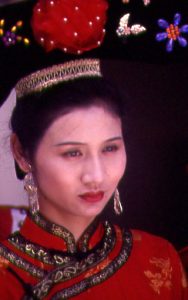 While Asian countries that have a genuine historical patronage in the form of monuments such as Borobodur, Sukhothai and Angkor Wat, or in once authentic arts and crafts centers such as the Sudaluk district of Chiang Mai, are turning their legacies into the resemblance of theme parks, places like Singapore and Hong Kong are now recreating ersatz versions of their past that are fast becoming almost as lucrative as the real thing. More wealth and a desire to court more tourism to build on that affluence are, of course, the main reasons for the growth of theme parks, but there are other motives. A good case in point is Hong Kong. More geared in former times to the shopper, single man or gambler off for a spree in nearby Macau, Hong Kong has begun to address itself more and more to the broader needs of families rather than exclusively to the tour groups, backpackers, girlie bar customers and Jockey Club punters who constituted the mainstay of its tourism in the past. Hence the theme park concept. Long–time Hong Kong resident Kevin Rafferty hinted at the larger-than-life quality of the newly created Special Administrative Region that made it ideal for the development of such complexes when he wrote that “Sometimes it seems as if Hong Kong exists only to claim its own chapter in the Guinness Book of World Records.”
While Asian countries that have a genuine historical patronage in the form of monuments such as Borobodur, Sukhothai and Angkor Wat, or in once authentic arts and crafts centers such as the Sudaluk district of Chiang Mai, are turning their legacies into the resemblance of theme parks, places like Singapore and Hong Kong are now recreating ersatz versions of their past that are fast becoming almost as lucrative as the real thing. More wealth and a desire to court more tourism to build on that affluence are, of course, the main reasons for the growth of theme parks, but there are other motives. A good case in point is Hong Kong. More geared in former times to the shopper, single man or gambler off for a spree in nearby Macau, Hong Kong has begun to address itself more and more to the broader needs of families rather than exclusively to the tour groups, backpackers, girlie bar customers and Jockey Club punters who constituted the mainstay of its tourism in the past. Hence the theme park concept. Long–time Hong Kong resident Kevin Rafferty hinted at the larger-than-life quality of the newly created Special Administrative Region that made it ideal for the development of such complexes when he wrote that “Sometimes it seems as if Hong Kong exists only to claim its own chapter in the Guinness Book of World Records.”
At Ocean Park, on the coast at Deep Water Bay, some of these Hong Kong superlatives can be put to the test. The park was opened in 1976 but has been considerably developed since then. And, despite Hong Kong’s frightful land scarcity, it has managed to continue expanding ever since. Billed as an “oceanarium,” it is more of an amusement and theme park than marine world. The emphasis is clearly on pleasing everyone, with landscaped gardens, a mini-zoo, theatre, space-wheel, a complex of water shoots and a giant roller coaster, ominously named the “Dragon.” For parents at least, a certain tolerance and open-mindedness is required if one is to appreciate the sights of Ocean Park. How else, for example, would it be possible to enjoy the sight of penguins plunging through machine-induced surf at Wave Cove?
As visitors descend by escalator or foot towards the exit of Ocean Park they have one last chance to clean out their pockets at the row of souvenir shops that are an indispensable presence at all theme parks. The shops here blend discreetly with the red-tiled roofs and giant incense burners of the Ming Dynasty Village – another replica, naturally. Short but highly accomplished displays of folk dancing, Chinese opera, ceremonial parades, kung fu and other performing arts are staged in the streets and village theatre throughout the day. Ocean Park is a timely reminder that Hong Kong owes its very existence as a foreign entrepot, not so much to the architectural and other vestiges of a rich cultural heritage, but to the trade and commerce it has generated, and to the patronage of its customers, clients and, more recently, the tourists who support it. With Hong Kong Disneyland looming on the horizon, it will need all the patronage it can get.
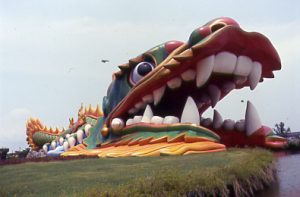

Two centuries of ice, rain, summer heat and a civil war have reduced the ramparts of Suwon, a city reached after a one-hour drive south from Seoul, to heaps of twisted rubble. Designed as a new capital, a kind of Taj Mahal or Shalamar of gurgling water and aesthetically pleasing structures, the city was left to languish until the government rebuilt it in 1975 at a cost of more than three billion won. Four-square, finely capped, an air of spanking newness about them, the stones look well set for eternity. These sturdy remnants of the Yi dynasty are the perfect companion to reconstructions of more fragile buildings to be found at the nearby Korean Folk Village.
Here is a slice of Korea’s last kingdom brought down to human scale. The village is billed as a “Living Museum,” an expression that takes on fresh meaning when you stroll through the sprawling grounds, happening across blacksmiths, potters, weavers and herbalists, all – apparently – seriously engaged in their work. When I visited, the houses, rice stores and barns of the “village” had begun to weather nicely, acquiring a deceptive patina of age. A real ginseng field had been laid out and more than 200 separate buildings faithfully recreated. These include a Buddhist temple, Confucian school, teahouse and market.
An inevitable degree of telescoping has taken place (an example of which is the recreation of farmhouses representing each of the provinces of Korea), but overall the layout succeeds at one stroke in informing and entertaining its visitors. The appeal of the Korean Folk Village lies not only in the apparent authenticity of its buildings, but in the vitality of its performers. Each day, a traditional costumed wedding procession is staged. A group of farmer musicians whirl like dervishes around the bride and bridegroom who are carried through lanes on a palanquin.
Although skeptics may detect shades of Disneyland in this folk village, the rugged earthen streets, natural building materials like bamboo and thatch, the presence of grandfather stones, great ceramic pots and jars for storing kimchi, and the weather-beaten “spirit post” guardians of the village create an ambience quite different from an attraction park, museum or the stilted European equivalent of such a place – which would probably be the city wax works. A certain “willing suspension of disbelief,” to quote the expression coined by the poet Coleridge, is required, of course, if you are to enjoy places like the Korean Folk Village, but even the hardest of cynics have been known to lighten up a little, lower their critical guard and concede that an afternoon in Suwon might be one well spent.
The village may provide an insight into why theme parks have become such big business in today’s Asia. The village is unquestionably an impressive and highly profitable showcase for Korean folk culture but, more importantly perhaps, it is a throwback to a more innocent age, a nostalgic time-voyage to a more harmonious and, paradoxical as it may seem among such concentrated artifice, authentic Korean past. The convivial and secure order of a Yi dynasty village provides, for Koreans and visitors alike, a flight from pressing realities, a reminder that this troubled peninsula once enjoyed a unity and co-mingling which now seems as elusive and distant in time as the age of Confucian scholars.
TRAVEL INFORMATION
Tang Dynasty City is open daily from 10am-7pm; the same hours and opening times apply to the Korean Folk Village. Ocean Park opens daily from 10am-6pm. All these theme parks have “traditional” restaurants and cafes. The wild boar at the eatery in the Korean Folk Village, is particularly good. Lonely Planet hands-on guides to the three areas are recommended. Insight provides more cultural information on the topics. Korea, Hong Kong and Singapore each have tourist offices in Tokyo.
Story & Photos by Stephen Mansfield
From J SELECT Magazine April 2005

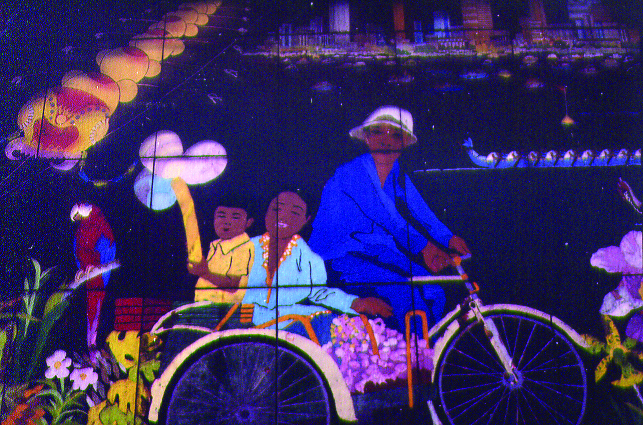

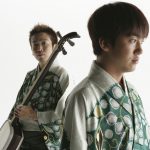

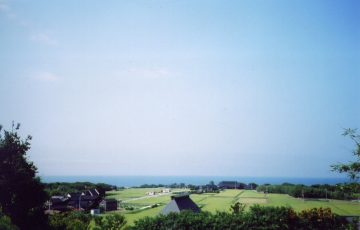
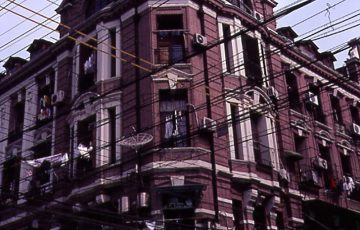
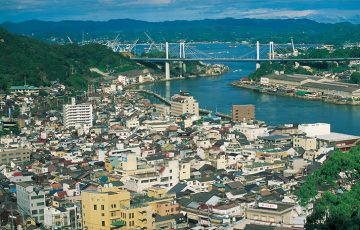
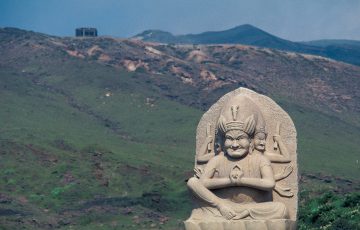
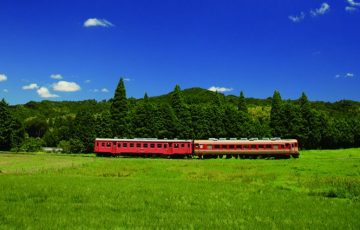
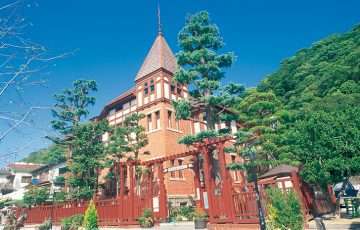
-360x230.jpg)
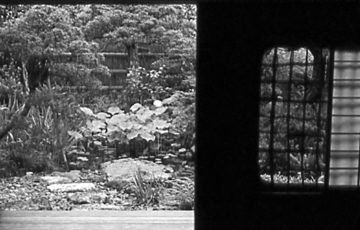


Recent Comments